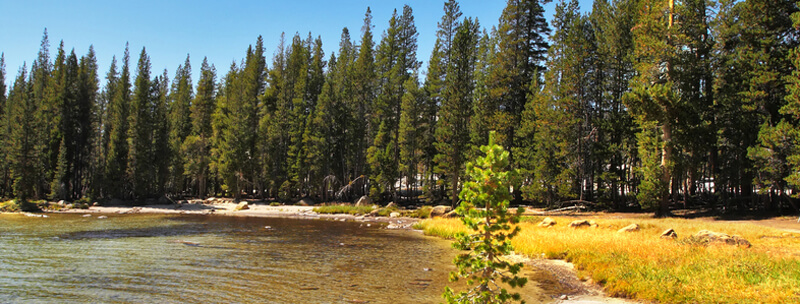The most significant change to New Jersey environmental law in the past year was the passage of the New Jersey Site Remediation Reform Act, P.L. 2009, ch. 60 (the "SRRA"), which ushered in fundamental changes to the way remediation of environmental contamination is conducted in the state. The last three issues of the Environmental Update included articles detailing contents of this legislation.
Following the last issue of the Environmental Update, the New Jersey Department of Environmental Protection (“NJDEP”) promulgated new regulations implementing the SRRA. Due to the significance of the changes to the rules governing remedial activities in the state, we devote this entire issue of Environmental Update to discussing certain key features of the regulatory changes authorized by the SRRA.
The changes to the site remediation program in New Jersey resulting from the SRRA have been described by the NJDEP as a "new world order." Most notable is the Licensed Site Remediation Professional (“LSRP”) Program whereby the NJDEP will have a limited role in the vast majority of cleanups. Instead, private LSRPs will oversee the work. In lieu of NJDEP-issued no further action letters (“NFAs”), the new LSRPs will issue Response Action Outcomes (“RAOs”) certifying that the investigation and cleanup of contaminated sites have been completed in accordance with state standards.
On November 4, 2009, an extensive regulatory adoption was simultaneously published and went into effect addressing not only how the LSRP program will work, but also providing administrative and substantive requirements that now apply to all site remediation cases. Procedurally, the adoption of the interim rules was unique. Adopted without notice and comment, the rules became effective immediately upon filing with the Office of Administrative Law, even before their publication in the New Jersey Register on December 7th. The interim regulations will be in effect for 18 months (i.e., until May 4, 2011), within which time NJDEP will propose them for readoption and provide an opportunity for public notice and comment.
With limited exceptions, any parties "initiating" a site remediation on or after November 4, 2009 must hire an LSRP to oversee the case, and NJDEP will no longer provide full departmental oversight or issue no further action letters for those cases. Initiating remediation includes starting or resuming a remediation in response to one of the following: taking over the remediation from someone else, discovering or becoming liable for a discharge, or where activities at a site result in the need to file a new deed notice. A new limited class of "direct oversight cases" remains subject to full NJDEP oversight with new and more stringent requirements, including NJDEP's use of funds provided by the responsible party to perform the remediation and NJDEP's selection of the remedial action. Pre-existing cases may continue under the old NJDEP oversight scheme without an LSRP until May 7, 2012; however, many of the other administrative and substantive provisions of the rules apply now to those cases. The new regulations allow existing cases to "opt-in" to the LSRP program, with NJDEP approval, at any time prior to the May 2012 deadline. Many factors, including the current stage of remediation, will impact the strategic decision for existing cases as to whether to opt-in to the new LSRP program.
The Administrative Requirements for the Remediation of Contaminated Sites (“ARRCS”), replace NJDEP's old Oversight Regulations and govern all administrative aspects of site remediation. Of special importance are provisions that define the obligations of the person responsible for conducting the remediation, provisions setting forth mandatory remediation timeframes, and provisions concerning the issuance (as well as the modification, rescission and invalidation) of final remediation documents (i.e., NFAs and RAOs). The ARRCS also contain provisions establishing a new permit program that is required for all remedial actions that employ institutional or engineering controls or operation and maintenance systems. Also of note are rules providing for new annual case fees that replace the previous NJDEP oversight cost system. The ARRCS rules contain provisions modifying the Grace Period rules designating violations as minor or non-minor as well as the penalty amount for noncompliance with hundreds of specific regulatory requirements.
The interim regulations also make significant modifications to the NJDEP's technical regulations that apply immediately to all sites. Receptor evaluations are required at all sites at the beginning of each case and must be updated throughout as necessary. Regulatory timeframes, in addition to the mandatory timeframes, apply. For properties where there will be a sensitive use such as schools, day care centers and residential properties, presumptive remedies must be used, unless NJDEP approves an alternative remedy.
As an example of how the new requirements would apply to an existing case, within one year all existing cases that have already submitted a Site Investigation Report must perform an initial receptor evaluation, which includes identifying the location of day care centers and schools within 200 feet of the site and performing any required vapor intrusion investigation in structures located within 100 feet of a volatile organic compound (“VOC”) groundwater plume. Failure to perform an initial receptor evaluation is a non-minor violation subject to a $20,000 per day penalty. Continued failure to complete the initial receptor evaluation within the mandatory timeframe of March 2011, without an approved extension from NJDEP, will subject the case to the new direct oversight program. Thus, an existing case that has not completed its receptor evaluation by November 4, 2010, the regulatory timeframe, is subject to a $20,000 per day penalty with no grace period. If the evaluation is still not complete by March 2011, then there is an additional $20,000 per day penalty and the case comes within the direct oversight program for failure to comply with a mandatory timeframe.
Given the breath and extent of the changes and new requirements in the interim rule adoption, all practitioners' cases should carefully consider their impact, whether for an existing case or a new one.
A hidden gem among the many aspects of the SRRA and its LSRP program, the new ARRCS rules and the amendments to the Technical Requirements for Site Remediation ("TRSR"), is the ability of LSRPs to exercise professional judgment in determining how best to remediate contaminated sites. While many commentators suggest that the SRRA will give rise to overly conservative decisions by LSRPs concerned to protect their licenses, the best LSRPs will remain advocates for clients, employing professional judgment, sound science and practice, and cost-effective approaches.
The SRRA and the recently adopted "interim" regulations begin to shed light on how LSRPs may exercise professional judgment. Indeed, the SRRA requires LSRPs to exercise "independent professional judgment" in performing all professional services. In practice, LSRPs will exercise professional judgment in applying the science of site remediation, including identifying when specific regulatory requirements apply, when it is appropriate to vary from these rules and when to make use of guidance, methods and practices developed by NJDEP, other federal or State environmental agencies, or other organizations that develop best practices (e.g., Interstate Technology and Regulatory Council (“ITRC”) or American Society for Testing and Materials (“ASTM”)).
The need to exercise professional judgment is implicit in site remediation decision-making, but it is also explicit in the SRRA and applicable regulations. In many circumstances, the SRRA and regulations expressly allow LSRPs to exercise professional judgment and to base decisions upon guidance developed by the United States Environmental Protection Agency and other states or to use "other relevant, applicable, and appropriate methods and practices," as long as these are protective of public health and the environment in the opinion of the LSRP. In particular, if the LSRP determines that there is no requirement provided by the TRSR that is applicable to the question at hand, or if use of NJDEP guidance is not "appropriate or necessary," the LSRP may employ other sources of guidance.
In addition, the TRSR expressly authorize a remediating party to vary from NJDEP's technical rules and guidance if, on behalf of the remediating party, the LSRP demonstrates that alternative approaches will achieve the same objectives, provide technical results that are scientifically verifiable, and protect public health and the environment. The LSRP would explain and justify his or her professional judgment to vary from the TRSR in the technical report addressing the work. NJDEP approval of the variance is not required. This ability to use variances and other guidance or practices provides significant opportunities for an LSRP to bring sound science, best practices and risk-based approaches to site remediation in New Jersey.
Making full use of these tools will require a confident and highly capable LSRP. Based upon new screening forms that have been drafted by NJDEP and public statements by NJDEP representatives, use of a variance or deviation from the Tech Regs by an LSRP may give rise to "additional review," or auditing, of the relevant reports or a RAO. The admonition to protect public health and the environment as their "highest priority" also may give some LSRPs pause when looking beyond the safe harbor of the TRSR’s specific requirements in order to use guidance or methods developed in other jurisdictions or by ITRC or ASTM.
Use of variances and other sources of guidance by LSRPs, however, is absolutely necessary. It also is nothing new. Formal variances from the TRSR approved by the Department, as well as informal ones frequently approved by the agency case team for a project, are a routine and essential element of current site remediation practice. This is necessary because agency rules and guidance cannot anticipate the panoply of site-specific issues and factors that must be considered in order to remediate a contaminated site. Borrowing scientific information, methods or practices from other sources also is fairly routine in current practice, in developing site-specific standards, and addressing sediments, background contamination and vapor intrusion, just to name a few issues. The exercise of professional judgment by LSRPs to supplement or vary from specific requirements of NJDEP will be equally necessary in the future if LSRPs are to perform their intended function to oversee the remediation of contaminated sites.
In summary, professional judgment, regulatory variances, or other guidances and methods can and should be employed by LSRPs. The SRRA and its new regulations provide LSRPs with the authority and tools for this purpose. Responsible parties, brownfields redevelopers, and others conducting site remediation should expect their LSRPs to exercise their professional judgment to achieve the best possible remediation outcomes for their clients.
Traditionally, the NJDEP has served as the repository of documents related to the environmental conditions of properties in New Jersey's site remediation program. As the SRRA divests NJDEP of much of its responsibility for overseeing site remediation, however, it also shifts the responsibility for preserving documents to LSRPs and the parties responsible for conducting remediation.
Section 20 of the SRRA requires LSRPs to "maintain and preserve all data, documents and information concerning remediation activities at each contaminated site" regardless of whether that documentation was developed by the LSRPs or by the LSRP's "divisions, employees, agents, accountants, contractors, or attorneys" so long as the documentation relates "in any way to the contamination at the site." Potentially, this provision creates an obligation on LSRPs to gather documentation held by third-parties who are involved in the site remediation process. Such third-party documentation presumably could include attorney-client privileged documents and attorney work product.
Because LSRPs must retain all of this documentation for all of their sites for an indefinite period of time, it seems likely that they will become the target of increased discovery requests. Litigants will know, for instance, that an LSRP serving as an expert witness ought to have extensive documentation from each of his past sites, as well as which documentation may be used against the LSRP at deposition or trial. Consequently, there may be a risk in using a LSRP as an expert witness if that person has a long history as a LSRP.
Section 20 of the SRRA also obligates LSRPs, at the time of issuance of a RAO, to provide in triplicate electronic copies to the NJDEP of all retained documentation. Furthermore, based on Governor Corzine's May 7, 2009 Executive Order, the NJDEP must post that documentation on the internet upon receipt. Consequently, there exists a potential for confidential or even privileged materials to become a readily-accessible and searchable part of the public record.
The ARRCS further complicates this problem because it expands the record retention obligation beyond what is stated in the SRRA. Instead of requiring LSRPs to maintain documentation, the NJDEP's new regulations place that burden on the persons conducting the remediation. Moreover, the regulations increase the amount of documentation that must be maintained, because the responsible parties must retain all documentation related to the remediation of the contaminated site regardless of whether that material was prepared by a LSRP.
Furthermore, the NJDEP has reserved the right to demand that the responsible party provide copies of all such documentation at any time, if so requested by the NJDEP. While the regulations do mention the "right to assert a privilege regarding such documents," they do not appear to otherwise relieve the responsible party of the obligation to provide the documents. Moreover, there is no apparent safeguard to prevent the NJDEP from disseminating privileged documents. This issue will likely be problematic in cases where the NJDEP is adverse to responsible parties, as it may provide a way to short-circuit normal discovery mechanisms.
Finally, the ARRCS formulation of the record retention obligation appears to be designed to foil the concept of using a non-LSRP as an armchair expert by responsible parties. Perhaps, with this regulatory change, the only safe way for a responsible party to communicate with its attorneys and experts is orally. In that way, it can still obtain necessary advice without risk of exposing its thoughts to the public. Of course, however, such an arrangement would likely not prove workable or acceptable in the long-run, as the basis for decisions (and the decisions themselves) would become lost to time and cloudy memories. Consequently, responsible parties will need to be wary of the document retention requirements, and will need to carefully consider what information that they memorialize.
SRRA eliminates much of the oversight that the NJDEP previously performed for sites undergoing environmental remediation. However, certain sites will be subject to the "direct oversight" provision of the SRRA, which authorizes the NJDEP to administer a comprehensive oversight of the remediation, including the selection of the remedial action. The direct oversight program is established by the SRRA, and is further developed by the AARCS.
The SRRA requires the NJDEP to administer direct oversight of the remediation of sites with certain regulatory violations, including those sites that have a history of noncompliance with remediation-related laws or regulations and sites that fail to meet the mandatory remediation timeframes established by the NJDEP. Similarly, sites where a discharge was discovered in or prior to May 2004 must complete the remedial investigation of the entire site by May 2014, or face mandatory direct oversight. The SRRA also gives the NJDEP authority to undertake the direct oversight of sites with chromate chemical product waste contamination, sites with multiple sensitive natural resources that have been injured by contamination, sites that have contributed certain contaminates to sediments in a surface water body, and sites that have been ranked by the NJDEP as high priority.
Within 30 days of receiving notification that the NJDEP is taking direct oversight of a remediation, the responsible party must establish a remediation trust fund in the amount of the estimated cost of the remediation; disbursements from the fund will require NJDEP's approval. Within 45 days of receiving the notification the responsible party must hire an LSRP to perform the remediation, if it has not previously retained one, and notify the Department of its selection. Under direct oversight, all submissions prepared by the LSRP must be submitted to the NJDEP for review and approval at the same time as they are provided to the responsible party. In addition to the submissions required from all responsible parties subject to SRRA, those subject to direct oversight must submit a feasibility study to the NJDEP for approval, implement a NJDEP-approved public participation plan, and pay the NJDEP's oversight costs. Significantly, the NJDEP will select the remedial action for all sites subject to direct oversight.
The SRRA resulted in a number of revisions affecting the Industrial Site Recovery Act ("ISRA") and the rules governing the statute ("ISRA Rules"). In addition to generally subjecting the remediating parties to the general requirements of the newly adopted ARRCS rules and the TRSR, a number of changes to the ISRA process itself were implemented.
The most significant change to the ISRA Rules relates to the documentation required to transfer ownership or operation of an industrial establishment prior to achieving compliance with ISRA. Prior to enactment of the SRRA, to transfer ownership or operation of an industrial establishment or authorize cessation of operations as it relates to ISRA compliance prior to the completion of the remediation and the Department's issuance of a no further action letter, the party with ISRA responsibility often entered into a "remediation agreement" or "remediation agreement amendment." Subsequent to enactment of the SRRA, in order to transfer ownership or operations of an industrial establishment without or prior to issuance of a final remediation document, the owner or operator of the industrial establishment now must submit a remediation certification rather than a remediation agreement or remediation agreement amendment. The Department is no longer accepting or processing "remediation agreements" or "remediation agreement amendments." Other types of ISRA approval (i.e., obtaining a regulated underground storage tank waiver; a remediation in progress waiver; a minimal environmental concern review; a remedial action workplan deferral, or a de minimus quantity exemption) still satisfy ISRA approval to close a transaction and remain unchanged by the revisions to the ISRA Rules.
The remediation certification differs from the remediation agreement is several respects. The remediation certification will not be approved by the Department; upon submission of the remediation certification, the transaction may proceed to closing. The application for a remediation agreement required a detailed cost estimate and identification of the type of remediation funding source proposed, as well as certifications by the owner, operator, transferee and/or lessee. While the remediation certification form retains the obligations for a cost estimate, certifications, establishment of a remediation funding source and payment of fees, it modifies these requirements in a few practical ways. The most noteworthy relates to the estimate of remedial costs and the remediation funding source. Unlike the old remediation agreement framework, where a default of $100,000 could be used for the remediation funding source where no estimate was available, the remediation certification requires the LSRP to prepare and certify an estimate of the cost of the remediation that will be used to establish the remediation funding source amount. However, while not specifically addressed in the ISRA Rules, the Department had indicated that a surrogate cost estimate may be used prior to completion of the Preliminary Assessment/Site Investigation (“PA/SI”) but only until 30 days after completion of the PA/SI, when it must be replaced with a site-specific certified estimate. The surrogate cost estimates are $100,000 when no contamination information is known and $250,000 where groundwater contamination is known at the site; an LSRP certification is not required for use of the surrogate amount. Further, rather than stating the type of remediation funding source to be submitted, evidence of establishment of that funding source is required. The Department has indicated that the Remediation Funding Source itself must accompany the remediation certification. Evidence of payment of fees is also required.
The certifications required are also revised; the exact wording is no longer prescribed by the ISRA Rules but rather certain identified topics must be described. These topic areas include the statutory liability of the owner or operator to perform and complete the remediation, liability for penalties, a grant of access to the Department, compliance with the SRRA and the requirement for preparation and submission of any document NJDEP may require regarding the remediation. While the regulations do not prescribe the wording of the certifications, the form itself does.
Other noteworthy impacts brought about by the amendments to the ISRA Rules include the elimination of the ability to amend an existing remediation agreement subsequent to November 4, 2009, and the elimination of the expedited review and limited site review options where the ISRA general information notice was received by the Department after November 4, 2009.
The ARRCS rules have made minor definitional amendments to the Spill Compensation and Control Act ("Spill Act") in order to make the recently promulgated SRRA applicable to the Spill Act.
"Covenant not to sue" Prior to the promulgation of the SRRA and the ARRCS rules, the NJDEP would issue NFAs with an accompanying covenant not to sue. Under the SRRA, however, the use of NFAs will be strictly limited, replaced by the issuance of RAOs by LSRPs. Thus, the covenant not to sue will not be expressly set forth in the RAO, but rather will be effective by operation of law upon the LSRP's issuance of the RAO. NJDEP retained the right under N.J.S.A. 58:10B-13.1 to issue NFAs with accompanying covenants not to sue in limited circumstances: (1) remediation of an unregulated heating oil tank and (2) remediation initiated prior to the effective date of the ARRCS rules and completed prior to May 7, 2012.
"Final remediation document" Under the ARRCS rules, as they are applicable to the Spill Act, the term "final remediation document" replaces an NFA. In all instances where an NFA was previously required, a final remediation document is now required. A final remediation document is (1) an RAO issued by an LSRP or (2) an NFA issued by the NJDEP. Since oversight of remedial actions by an LSRP is now the primary method of remedial compliance, NFAs are only issued in limited circumstances. Therefore, in most instances under the Spill Act, where an NFA was previously required, an RAO will now be required.
The ARRCS rules have made significant amendments to the Grace Period Rules. Several violations originally listed as minor violations subject to grace periods are now classified as non-minor violations. In addition, the base penalty for various violations has been increased. Furthermore, new violations that correspond with the new requirements under the SRRA and ARRCS rules have been added to the Grace Period Rules. It is important to be aware of these changes as they affect many notice, filing, and remediation requirements.
Although a central tenet of the SRRA is to invest LSRPs with oversight activities traditionally within the purview of the NJDEP, the Department retains control of several aspects of remedial activities including administration of the new remedial action permit program. The SRRA itself authorizes NJDEP to "establish a permit program to regulate the operation, maintenance and inspection of engineering or institutional controls and related systems installed as part of a remedial action of a contaminated site." Prior to the SRRA, the Department required a biennial certification for engineering and institutional controls, which included a certification that reported on the monitoring, inspection and maintenance of such controls. Regulations issued on November 4, 2009 by the ARRCS have tweaked NJDEP's permitting program in several ways.
Generally, ARRCS gives NJDEP the authority to issue soil remedial action permits and groundwater remedial action permits. Specifically, NJDEP will issue a "remedial action permit" when it receives, after January 15, 2010, either of the following: (1) a properly recorded deed notice and Soil Remedial Permit Application Form, or (2) a groundwater work plan that includes either natural attenuation, an engineering control or requirements for monitoring, maintenance and evaluation of any institutional or engineering control as part of a remedial action. Furthermore, as existing biennial certifications come due, they will be converted into remedial action permits.
Permit holders shall be obligated to comply with all maintenance, monitoring and evaluation requirements contained in a remedial action permit, as well as prepare and submit biennial certifications every two years. The permittee also must comply with conditions contained in any deed notice, any remedial action work plan or report approved by NJDEP or an LSRP or well restrictions associated with a classification exception area and "[a]ll other conditions that the Department includes" in the remedial action permit. It is unknown what other conditions the NJDEP could impose on the permit holders through the somewhat open-ended authority to include "all other conditions" it deems appropriate, but the authority appears broad.
Perhaps the most significant change is that the NJDEP will require establishment and maintenance of financial assurance for all remedial action permits that include engineering controls for an amount equal to "an estimate of the future costs to operate, maintain, and inspect all engineering controls part of any remedial action at the site[,]" to guarantee the permittee's performance until the Department terminates the permit. In other words, the permit holder must establish a funding source for as long as it takes to maintain the engineering control. Such an obligation could exist, at a minimum, for several years, in the case of a groundwater pump and treat system. Although the NJDEP may always have had the authority to require some sort of financial assurance, in practice the Department rarely enforced this requirement and this obligation has now been established by regulation.
Subject to certain limited exceptions, persons who require institutional or engineering controls as part of a soil or groundwater remediation must obtain a remedial action permit. The new permitting scheme requires that a remedial action permit be obtained by any "owner" of a contaminated property when an engineering or institutional control or operation and maintenance requirement for a remedial action is implemented, and by each "subsequent owner, operator and tenant" during that person's ownership or operation. Thus, the permitting obligation extends beyond the party who is responsible for contamination to the owner and any later purchaser, operator or tenant of such a property.
In addition, a remedial action permit must be obtained by the following four categories of persons: (1) each owner and operator of an underground storage tank facility who is liable for remediation pursuant to the Underground Storage of Hazardous Substances Act; (2) each owner and operator of an industrial establishment who is liable for remediation pursuant to ISRA; (3) any other person in any way responsible, pursuant to the Spill Act, and (4) any other person who is remediating a site. If ARRCS's wide net captures more than one person with a permitting obligation, a likely occurrence, the parties can become co-permittees, though remain jointly and severally liable for the permit's obligations.
ARRCS exempts certain groups from having to obtain a remedial action permit: governmental entities; a person who purchased property on or before SRRA's effective date (May 7, 2009) and is not otherwise liable for cleanup and removal costs under the Spill Act; a person remediating one's primary or secondary residence; the owner or operator of a child care center who is remediating a licensed child care center; the person responsible for remediating a school; and the owner of a small business who is responsible for performing a remediation at his or her place of business.
ARRCS contains provisions for transferring, modifying and terminating remedial action permits. The cost for applying for, modifying or terminating a soil remedial action permit is $550. The fee of applying for, modifying or terminating a groundwater remedial action permit is $750. The cost for transferring either type of permit is $100. There are also annual review fees for all remedial action permits.
The SRRA has caused changes not only to the formal regulations issued by NJDEP, but to informal guidance documents issued by the Department. Below is a list of Guidance Documents issued by NJDEP in conjunction with the new law.
Guidance for the Issuance of Response Action Outcomes (RAO) - Posted November 9, 2009 - This document is meant to assist LSRP in drafting RAOs. The guidance specifies when a LSRP may issue a response action outcome, which type of RAO may be issued, to whom it may be issued and what is to be included. The guidance also calls for the presentation of information in accordance with the Department's preferred document structure, which is included in the guidance as Attachment 1.
Protocol for Addressing Extractable Petroleum Hydrocarbons - Posted November 16, 2009 - This guidance document replaces the Draft/Deliberative Protocol for Extractable Petroleum Hydrocarbon (EPH) Contamination - September 17, 2009 and EPH Protocol - March 23, 2009 and provides direction on how to address petroleum hydrocarbon mixture discharges. It does not apply to the more volatile petroleum hydrocarbon mixtures (i.e., gasoline, kerosene, jet fuel, and mineral spirits), which are still investigated pursuant to the TRSR. Further information is available on the NJDEP website.
Extractable Petroleum Hydrocarbon (EPH) Calculator Spreadsheet - Posted November 9, 2009 - The spreadsheet evaluates whether or not the sampling data entered exceeds the EPH soil remediation criterion.
Extractable Petroleum Hydrocarbons Methodology October 2009 - Posted November 16, 2009 - This guidance mandates the use of specific analytical techniques in order to ensure the quality of sampling data.
Extractable Petroleum Hydrocarbons (EPH) Protocol and EPH Method Phase-in - Posted November 12, 2009 - This guidance outlines changes to the manner in which samples are analyzed and petroleum product data is reported. The phase-in period for the new EPH methodology is scheduled to last six months, ending on May 10, 2010.
Guidance for the Preparation of the Case Inventory Document - Posted November 9, 2009 - The Case Inventory Document (“CID”) is a summary of the areas of concern (“AOC”s), and site conditions including impacted media, contaminants of concern, exposure routes, existing and potential receptors, and a brief outline of technical work completed to date. The CID must be updated as remediation at the site(s) progresses.
Draft Immediate Environmental Concern (IEC) Guidance - Posted October 5, 2009 - This document refines the definition of an Immediate Environmental Concern and outlines the steps that must be taken to mitigate the health risks posed by an IEC. Some common IECs include potable well contamination and vapor intrusion from subsurface contaminants. Once an IEC is identified, the Department's guidance imposes strict timeframes for restoration of the property such that the area no longer represents a threat to public health.
Draft/Deliberative Requirements for Remedial Actions Rendering Properties "Unusable" - Posted October 5, 2009 - This guidance requires an LSRP or person responsible for remediation at a site to obtain approval from a regional and/or municipal authority before proceeding with a work plan calling for a remedy that would result in an "unusable" tract of land. The Department's definition of "unusable" in the guidance is quite comprehensive and suggests that a remediating party and/or a LSRP should attempt to avoid a remedy that would restrict the use of a site for future redevelopment or recreational use.
Draft Guidance for Presumptive Remedies for Schools, Child Care Facilities, and Residences - Posted July 31, 2009 - The current guidance sets forth minimum standards for the remediation of properties with which sensitive populations may come into contact. A more detailed final guidance document will be forthcoming.
Guidance on When the Department of Environmental Protection May Undertake Direct Oversight of a Remediation of a Contaminated Site - Posted July 7, 2009 - The Department will consider direct oversight of a remediation if chromate chemicals are found on-site above certain concentrations, more than one natural resource has been injured by contaminants from the site, the site has contributed to sediments contaminated by polychlorinated biphenyl, mercury, arsenic, and/or dioxin in a surface water body, or the site is ranked by the Department in the category requiring the highest priority. (See section 2 of P.L.1982, c.202 (C.58:10-23.16) for list of priorities). Please also note that certain sites undergoing remediation may be exempt from this guidance.
In the last few years, the NJDEP Site Remediation Program increasingly focused its attention on building interiors affected by environmental contamination. This scrutiny has been refined and tightened further through the implementation of the SRRA began at the end of 2009.
Much like radon, which many people deal with in their homes and businesses, vapor intrusion ("VI") concerns indoor air quality resulting from the entry into a building of hazardous materials through the foundation or floor. Unlike radon, which usually is caused by natural subsurface conditions, VI results from environmental contamination. In particular, VI deals with the volatilization (evaporation) of VOCs found below the surface. VOC vapors can rise through the soil and can pass into a building interior through cracks in the foundation. These vapors can remain in interior air, especially in basements, causing a risk of VOC exposure to the building's occupants.
In 2005, the Department issued its Vapor Intrusion Guidance ("2005 VI Guidance") to be used in evaluating VI related to contaminated sites, including the sampling of the subsurface soil gas and the indoor air of buildings located near or above known contamination. Since that time, NJDEP has updated the 2005 VI Guidance on several occasions, including changes to the applicable screening levels in 2006 and 2007 and, in 2009, changes in sampling procedures for sensitive populations. Following the SRRA, the Department has announced that it is preparing major revisions to the 2005 VI Guidance; a draft of the revisions has not been released as of this writing. Additionally, the Department has released the draft Immediate Environmental Concern Guidance ("IEC Guidance"), which, in part, defines the duties of a person responsible for remediation when a VI condition is discovered.
Prior to addressing a suspected VI condition (defined as an exceedance of indoor air screening levels related to a VI pathway), under the 2005 VI Guidance it was acceptable under most circumstances to verify sampling results with one round of confirmatory sampling. The draft IEC Guidance requires two rounds of confirmatory sampling, however, and does not permit the responsible party to postpone the mitigation work pending the results of the confirmatory sampling. In addition, the IEC Guidance sets forth strict timelines for addressing suspected VI conditions:
-
Upon discovery of the VI condition, the responsible party must provide immediate notice to the NJDEP through its hotline.
-
Within five days of discovery, the responsible party must provide notice to the property owner, provide written notification of the condition and copies of test results to the NJDEP, the property owner, any tenants, the municipal clerk and the local health department, and complete an interim response action (e.g., sealing exposed sump pits or cracks in a basement floor) to reduce the potential for exposure at the property.
-
Within 60 days of discovery, the responsible party must implement an engineered system to remediate the VI conditions at the subject property. The responsible party also must delineate the extent of related VI conditions in nearby buildings.
-
Within 120 days of discovery, the responsible party must submit a response action report detailing the effectiveness of the engineered system and the results of the delineation, with updates every 30 days until all VI impacts are mitigated.
-
Within 270 days of discovery, the responsible party must complete a remedial investigation of the sources of the VI impacts and must initiate "source control remedial action" to reduce the contaminants that are contributing to VI. The results of this work are to be submitted in an IEC Source Control Report.
It is not yet clear what further changes are upcoming with the revised VI Guidance, but NJDEP's website states that they likely will include numerous procedural modifications regarding the investigation and mitigation of suspected VI impacts. Please contact us should you have any questions regarding the existing or proposed vapor intrusion requirements.
The enactment of the SRRA resulted in the NJDEP issuing wide-reaching amendments to its regulations. The most significant changes are discussed in previous articles in this newsletter. But there were other additional changes, some sizeable and others minor to a number of ancillary chapters of the New Jersey Administrative Code. The amended regulatory chapters are as follows:
1. Chapter 1E: Discharges of Petroleum and Other Hazardous Substances
2. Chapter 1I: Processing of Damage Claims Pursuant to the Sanitary Landfill Facility Closure and Contingency Fund Act
3. Chapter 1J: Processing of Damage Claims Pursuant to the Spill Compensation and Control Act
4. Chapter 7A: Freshwater Wetlands Protection Act Rules
5. Chapter 8: Stormwater Management
6. Chapter 9C: Ground Water Quality Standards
7. Chapter 14A: New Jersey Pollutant Discharge Elimination System
8. Chapter 14B: Underground Storage Tanks
9. Chapter 22: Financial Assistance Programs For Environmental Infrastructure Facilities
10. Chapter 26B: Industrial Site Recovery Act Rules
11. Chapter 26C: Administrative Requirements for the Remediation of Contaminated Sites
12. Chapter 26D: Remediation Standards
13. Chapter 26E: Technical Requirements for Site Remediation
14. Chapter 38: Highlands Water Protection and Planning Act Rules
15. Chapter 45: Rules for the Review Zone of the Delaware and Raritan Canal State Park











